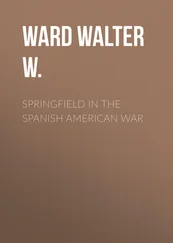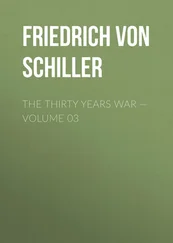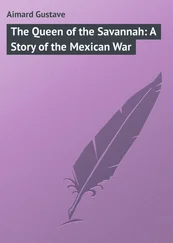On the other hand, no aid was coming from the south. The 1500 dragoons were not even phantasmal. Ugarte’s cheering statement that he could bring 1000 men to New Mexico had no doubt been intended, and no doubt was understood, as mere stimulation. According to the latest returns, New Mexico, Chihuahua, Durango and Zacatecas together had less than 2000 poorly equipped and poorly subsisted troops, the greater part of whom were the scattered and almost worthless Presidials. The general government, when officially notified of the coming invasion, merely issued a few nugatory orders and expressed “profound regret.” The people’s loyalty to the government and especially to the governor appeared uncertain. Armijo understood that he was not a general, and no doubt understood also that he was a coward; and for all these reasons he decided—though wavering to the end—that hostilities were to be avoided, should that be possible. Diego Archuleta also, one of the chief military officers, was approached by Magoffin, and under genial manipulation proved to be much less bloodthirsty than had been supposed. Consul Alvarez, it will be recalled, had previously found the subordinate officials tractable, and it may safely be supposed in general that very little desire to fight the Americans existed in the governor’s entourage.16
Pino seems to have felt differently, however, and when Armijo was on the road to the canyon, August 16, with two or three hundred soldiers and about eight guns, he received a message from that officer threatening to come and fetch him, if he did not join the militia. This augured ill, and the augury proved correct. The people demanded to be led against the enemy, but Armijo said the Americans were too strong. Pino offered to attack if he could have a part of the regulars, but the governor was determined to keep them all for his own protection. Then he was called a traitor, and retaliated by calling the people disloyal and cowardly. They threatened him; and he, more afraid of his own army than of Kearny’s, urged the militia to go home and let the regulars do the fighting. Threatened again, he forbade the people to come near his camp; and finally he turned his cannon in their direction.16
In reality the people themselves had no great hunger for battle. Besides detesting Armijo, they were doubtless influenced by much lurking anti-Mexican or pro-American sentiment; had probably learned to question the diabolical intentions attributed to Kearny’s troops; were fully aware in a general way of American superiority; and felt deeply impressed by tales about the great number of the invaders, their long train, their many guns, their enormous horses and the terrible men themselves—an army, in short, such as they had never dreamed of before. The quarrels of their leaders both disgusted and disheartened them; and they began to think, too, of their lives, families and property. August 17, therefore, they broke up, and went every man his own way. A council of the regular officers favored retreat. The Presidials deserted or were dismissed; the cannon were spiked and left in the woods; and in about two weeks Armijo—though offered personal security and freedom at Santa Fe—turned up at Chihuahua with ninety dragoons. He had proved not exactly a traitor, perhaps;14 but certainly not a patriot, and still more certainly, if that was possible, not a hero.16
The result was that on August 17 a fat alcalde rode up to Kearny on his mule at full speed, and with a roar of laughter cried, “Armijo and his troops have gone to hell and the Canyon is all clear.” The news was confirmed; and early the next day, instead of turning the pass by a difficult and circuitous route, of which the General had learned, the Americans advanced boldly, though still with caution, on their last hard march—twenty-eight miles to Santa Fe. Just beyond the defile, at a position that might easily have been made impregnable, were found light breastworks, a sort of abatis, a spiked cannon, and tracks which guided some of Clark’s men to the rest of Armijo’s ordnance. At three o’clock, after receiving a note of welcome from Vigil, the acting governor, General Kearny, riding at the head of the troops, came in sight of the town. Neither man nor beast had been allowed to stop for food that day, and the column dragged heavily; but the rear was up three hours later, and then, leaving the artillery on a commanding hill, the rest of the troops eagerly entered Santa Fe.16
Alas, the Mecca of so many dreams and hopes was promptly rechristened “Mud Town,” for it proved to be only a straggling collection of adobe hovels lying in the flat sandy valley of a mountain stream, where a main line of the Rockies came to an end amidst a gray-brown, dry and barren country.15 Even the palace, a long one-story adobe building, had no floor; and after partaking of refreshments, addressing the people in his usual tone of mingled courtesy and firmness, and listening to the salute of thirteen guns which greeted the raising of the Stars and Stripes, Kearny had to sleep on its carpeted ground, while most of the troops, too exhausted to eat, camped on the hill.16
The next day Kearny delivered a more formal address, but the style of his remarks was the same as before; and his kindly, simple, determined manner produced an excellent impression. Thundering vivas answered him; and then Vigil, basing his remarks on the conviction that “no one in the world has resisted successfully the power of the stronger,” expressed a joyless yet hopeful acceptance of the situation. We now belong to a great and powerful nation, he said, and we are assured that a prosperous future awaits us. Such of the officials as desired to retain their places then took an oath of allegiance to the United States. The following day chiefs of the Pueblo Indians came in and submitted, and on the twenty-second Kearny issued a proclamation. This embodied the same assurances and warnings as the addresses, but it added that western as well as eastern New Mexico was to be occupied, that all the inhabitants were claimed as American citizens, and that a free government would be established as soon as possible.17
By this time a fort, named after Marcy, had begun to be visible on the hill. The site was not well adapted for a regular work; but as it commanded the town perfectly at a distance of about six hundred yards from the palace, and was not commanded by any eminence, it served the purpose admirably. One point, however, still caused anxiety. There seemed to be danger that the Río Abajo district, supported by troops from the south, might rise against the invaders; and reports came that pointed toward precisely such an event. Kearny went down the river, therefore, on September 2 with seven hundred men. But he found no enemy. The Americans were everywhere well received and entertained. Ugarte had indeed left El Paso del Norte for New Mexico on August 10, but his troops numbered only four hundred; they had little ammunition and no artillery; Armijo discouraged him by saying that 6000 Americans were on their way south; the prospect of marching eighteen days—a part of the time in a desert—was not inviting; and so the expedition went home. Kearny returned to Santa Fe on September 11, and about noon on the twenty-fifth he set out with his effective dragoons for California, dreaming of a new conquest.17
Конец ознакомительного фрагмента.
Текст предоставлен ООО «ЛитРес».
Прочитайте эту книгу целиком, купив полную легальную версию на ЛитРес.
Безопасно оплатить книгу можно банковской картой Visa, MasterCard, Maestro, со счета мобильного телефона, с платежного терминала, в салоне МТС или Связной, через PayPal, WebMoney, Яндекс.Деньги, QIWI Кошелек, бонусными картами или другим удобным Вам способом.












